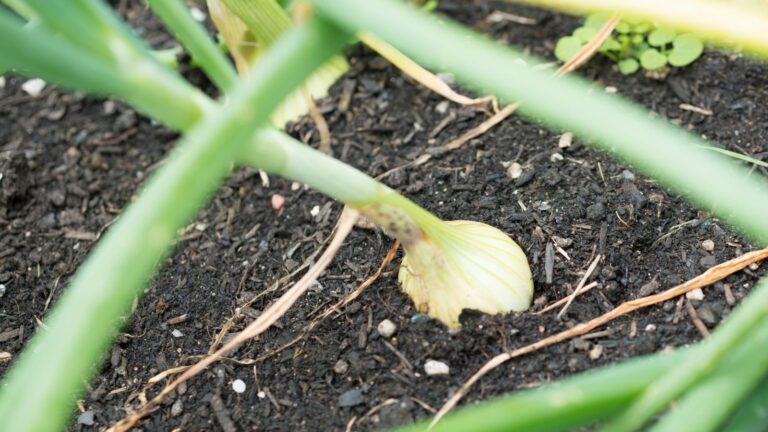
[ad_1]
Onion cultivation is a fascinating endeavor that has been practiced for centuries. Onions are a staple food in many households and they are easy to grow. By following a few simple techniques, even beginner gardeners can grow healthy and fruitful onion crops. In this beginner’s guide, we will explore the various techniques used in onion cultivation.
Cultivating Onion
-
Choosing the Right Onion Seeds
Choosing the right variety of onion seeds is crucial for a successful crop. There are several varieties of onions available, such as red, white, and yellow onions. To ensure that you select the right seed variety, consider factors such as the climate in your area, the size and type of onion that you want to grow, and the disease resistance of the variety.
-
Preparing the Soil
Onions require well-drained soil that is rich in organic matter. Before planting, work the soil by removing any debris and adding compost or aged animal manure. Use a soil pH tester to ensure that the soil pH is between 6.0 and 7.5, which is the ideal range for onions.
-
Planting Onion Seeds
Onions can be grown from seeds, sets, or transplants. Plant onion seeds in rows about six inches apart and half an inch deep. Water the seeds regularly, but be careful not to overwater as this can lead to rotting. If you are using sets or transplants, space them about four inches apart.
-
Managing Onion Weeds
Onions are highly susceptible to weed competition, which can significantly reduce their growth and yield. Keep the onion patch weed-free by hand weeding or using a hoe. You can also apply organic mulch to suppress weed growth.
-
Watering Onion Crops
Onions require a consistent supply of water throughout their growing season. Water them deeply once or twice a week, preferably in the morning. Avoid getting the leaves wet, as this can increase the likelihood of disease.
-
Fertilizing Onion Crops
Onions benefit from several applications of fertilizer throughout their growing season. Apply a balanced fertilizer with a nitrogen-phosphorus-potassium ratio of 10-10-10, 5-10-5, or 5-10-10. Do not apply too much fertilizer, as this can encourage excessive foliage growth at the expense of bulb development.
-
Onion Pest and Disease Management
Onions are prone to several pests and diseases such as onion maggots, thrips, bulb mites, and downy mildew. Monitor your onion crops regularly for signs of infestation or disease. Use organic remedies such as neem oil or insecticidal soap to control pests. Apply fungicides to manage fungal diseases.
-
Harvesting Onion Crops
Onions take about four to five months to mature. You can tell that onions are ready to harvest when the tops begin to turn yellow and flop over. Pull the onion bulbs out of the ground and allow them to dry in a sunny spot for a few days. Remove the tops and store the onions in a cool, dry, and well-ventilated place.
Conclusion
Onion cultivation is a rewarding experience that requires some effort and patience. By following these simple techniques, you can grow healthy and flavorful onions in your garden. Remember to choose the right variety of seeds, prepare the soil, water and fertilize regularly, and manage pests and diseases. Harvest your onions at the right time and store them properly for use in your favorite recipes. Good luck!
[ad_2]